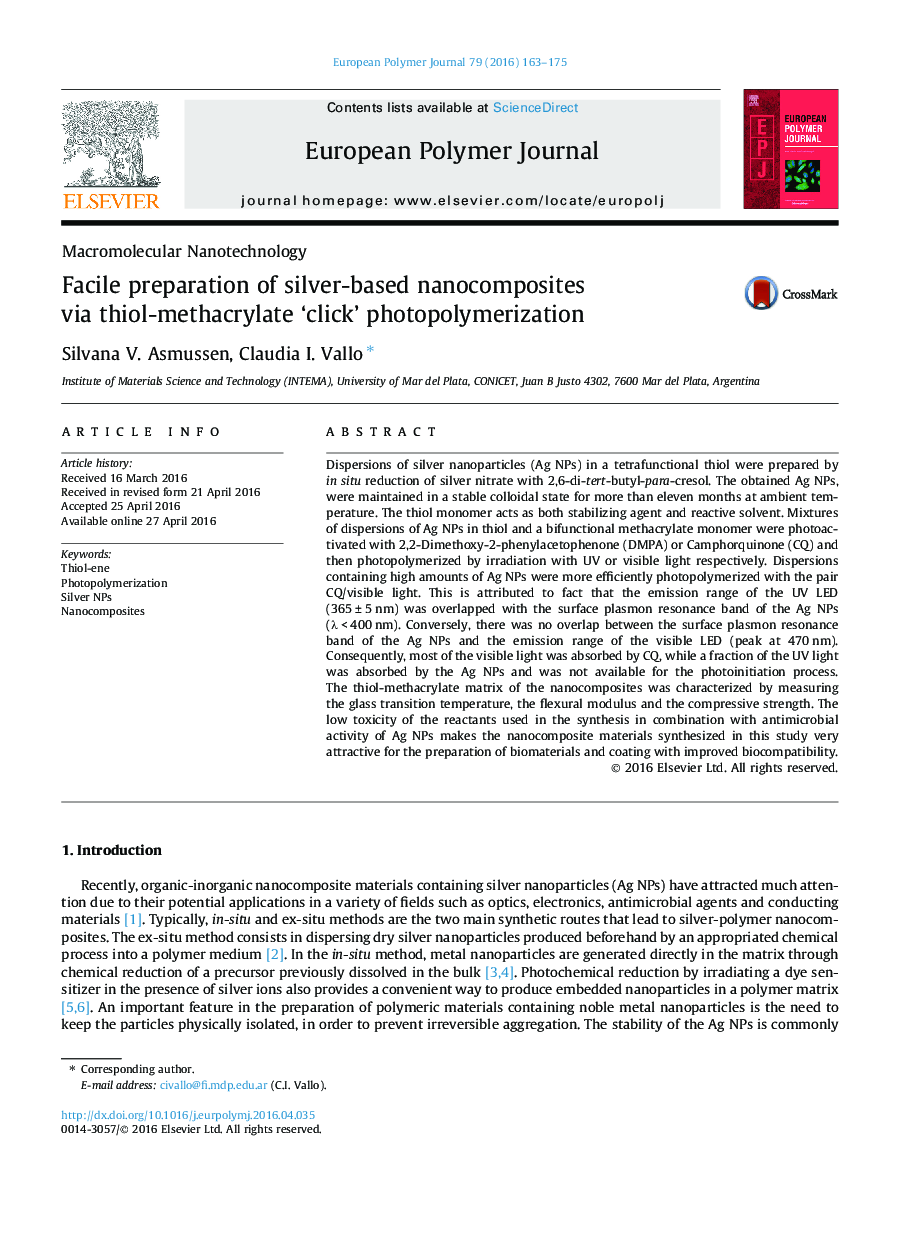| Article ID | Journal | Published Year | Pages | File Type |
|---|---|---|---|---|
| 1401326 | European Polymer Journal | 2016 | 13 Pages |
•Silver nanoparticles (Ag NPs) were synthesized in situ in a tetrafunctional thiol.•Dispersions stored for eleven months showed no drastic change in UV–vis spectra.•The thiol monomer acts as both stabilizing agent and reactive solvent.•Mixtures thiol methacrylate containing Ag NPs were polymerized by UV and visible light.•Nanocomposites are attractive for applications that require biocompatibility.
Dispersions of silver nanoparticles (Ag NPs) in a tetrafunctional thiol were prepared by in situ reduction of silver nitrate with 2,6-di-tert-butyl-para-cresol. The obtained Ag NPs, were maintained in a stable colloidal state for more than eleven months at ambient temperature. The thiol monomer acts as both stabilizing agent and reactive solvent. Mixtures of dispersions of Ag NPs in thiol and a bifunctional methacrylate monomer were photoactivated with 2,2-Dimethoxy-2-phenylacetophenone (DMPA) or Camphorquinone (CQ) and then photopolymerized by irradiation with UV or visible light respectively. Dispersions containing high amounts of Ag NPs were more efficiently photopolymerized with the pair CQ/visible light. This is attributed to fact that the emission range of the UV LED (365 ± 5 nm) was overlapped with the surface plasmon resonance band of the Ag NPs (λ < 400 nm). Conversely, there was no overlap between the surface plasmon resonance band of the Ag NPs and the emission range of the visible LED (peak at 470 nm). Consequently, most of the visible light was absorbed by CQ, while a fraction of the UV light was absorbed by the Ag NPs and was not available for the photoinitiation process. The thiol-methacrylate matrix of the nanocomposites was characterized by measuring the glass transition temperature, the flexural modulus and the compressive strength. The low toxicity of the reactants used in the synthesis in combination with antimicrobial activity of Ag NPs makes the nanocomposite materials synthesized in this study very attractive for the preparation of biomaterials and coating with improved biocompatibility.
Graphical abstractFigure optionsDownload full-size imageDownload as PowerPoint slide
